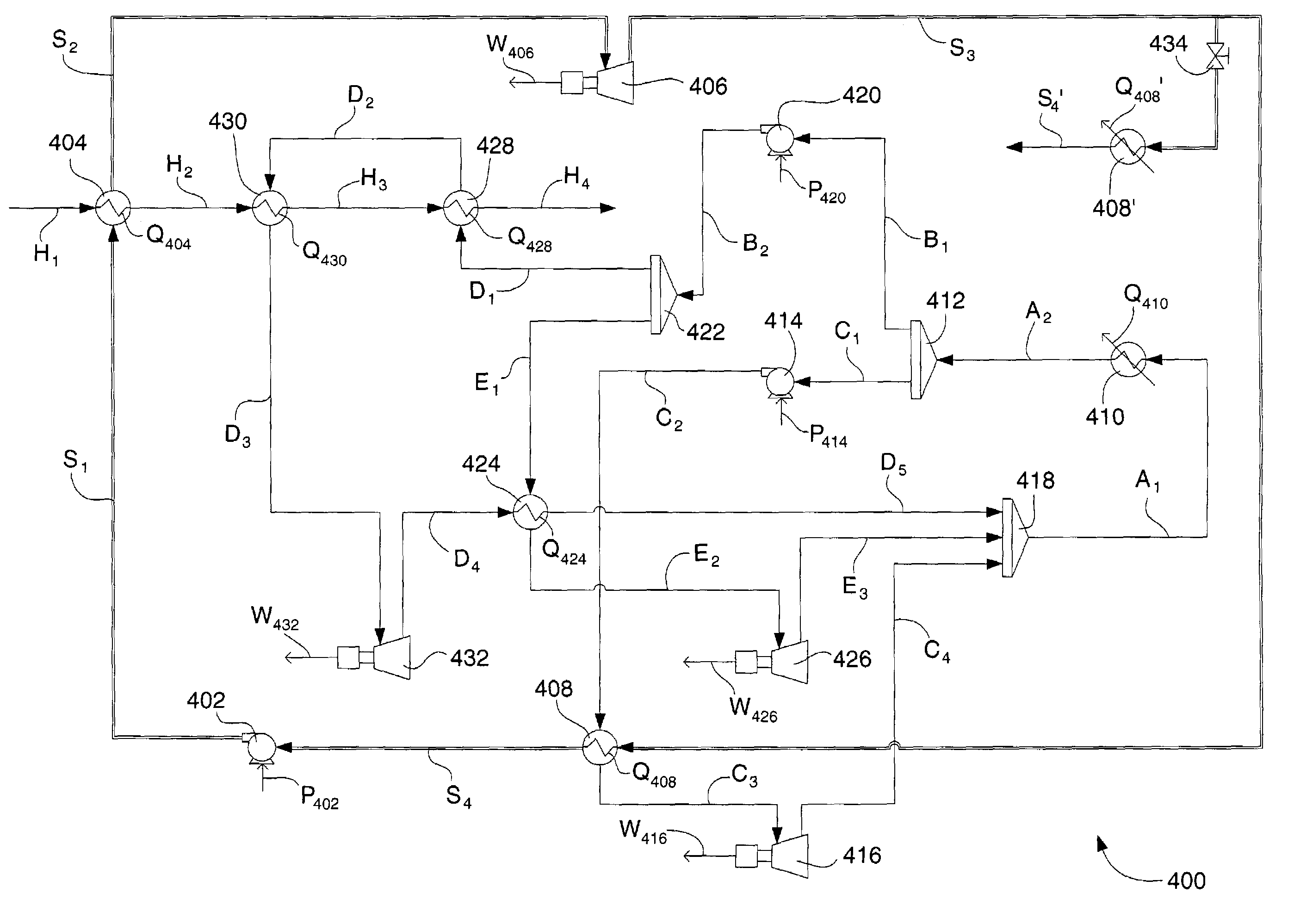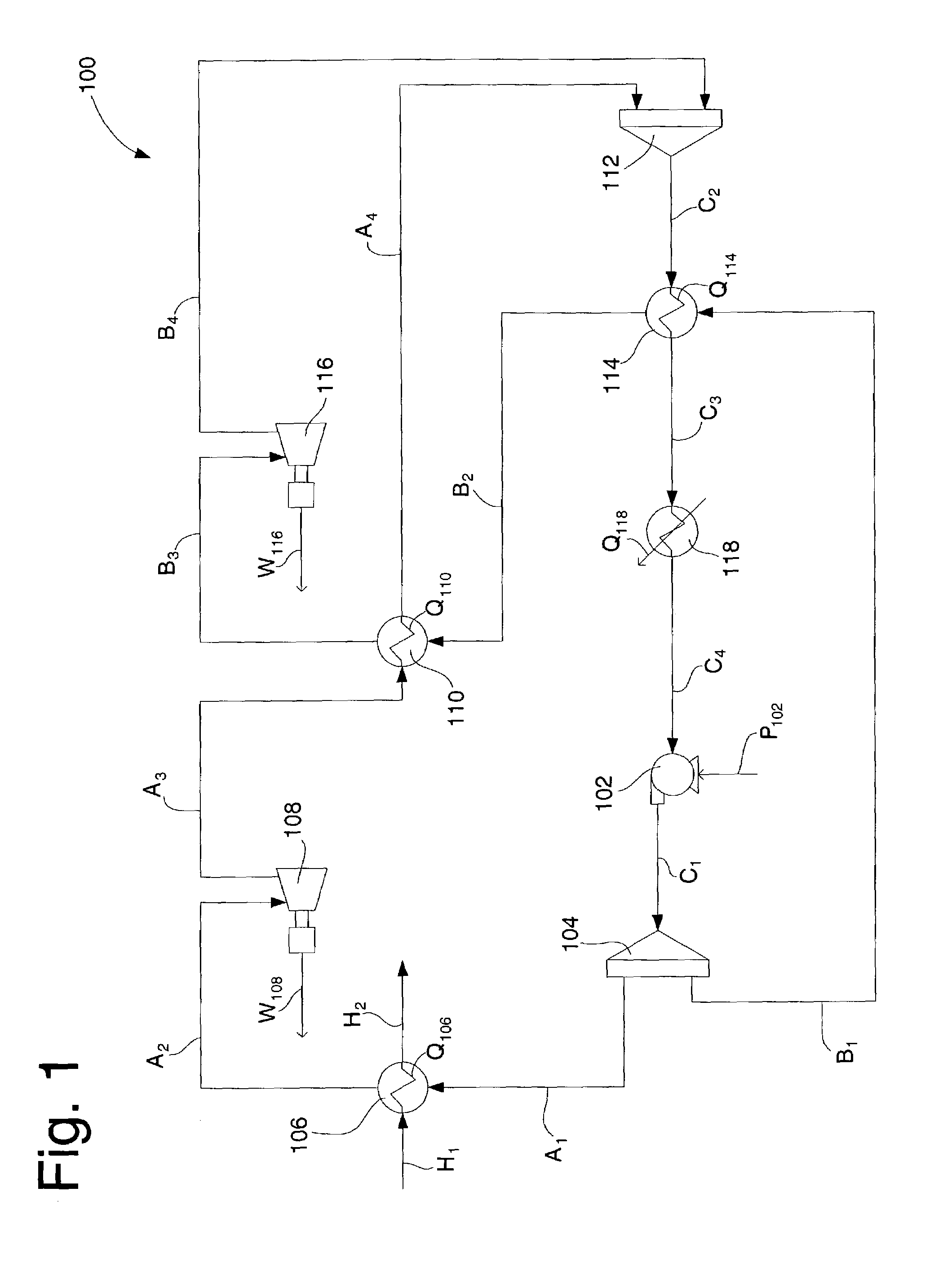Cascading closed loop cycle power generation
a closed loop cycle and power generation technology, applied in the direction of mechanical power devices, machines/engines, mechanical apparatus, etc., can solve the problems of dramatic inefficiencies, limited useful energy recovered, and little, if any, useful energy extracted, so as to improve the efficiency of the power system and increase the pressure of the working fluid
- Summary
- Abstract
- Description
- Claims
- Application Information
AI Technical Summary
Benefits of technology
Problems solved by technology
Method used
Image
Examples
Embodiment Construction
[0038]Developing electricity in a more efficient manner is of paramount importance as energy sources are depleted and the pollution generated from the combustion of fossil fuels continues to harm the environment. The Cascading Closed Loop Cycle of the present invention provides a closed loop power generation system that may be used as a primary power source. With the CCLC, improved efficiency is provided by reducing the amount of energy lost to overcome the latent heat of vaporization of the power generation medium and more effectively capturing heat from available heat sources and converting this heat to useful energy. The Super Cascading Closed Loop Cycle (Super-CCLC) of the present invention offers a secondary power source that can be used in conjunction with conventional power systems to increase power generation efficiency by generating useful energy from the heat lost in the process of generating power using steam turbines or other conventional power systems. In the Super-CCLC...
PUM
 Login to View More
Login to View More Abstract
Description
Claims
Application Information
 Login to View More
Login to View More - R&D
- Intellectual Property
- Life Sciences
- Materials
- Tech Scout
- Unparalleled Data Quality
- Higher Quality Content
- 60% Fewer Hallucinations
Browse by: Latest US Patents, China's latest patents, Technical Efficacy Thesaurus, Application Domain, Technology Topic, Popular Technical Reports.
© 2025 PatSnap. All rights reserved.Legal|Privacy policy|Modern Slavery Act Transparency Statement|Sitemap|About US| Contact US: help@patsnap.com



